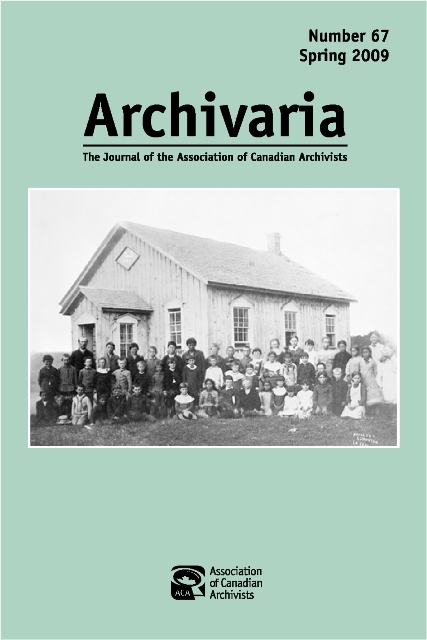A Pattern Language for Electronic Records
Abstract
Ten years ago Luciana Duranti highlighted the intellectual and physical characteristics of documents with an analogy to architecture. She argued that the physical elements of buildings and documents convey meaning only in tandem with the ideas and culture from which they come. At the same time, software engineers, computer scientists, and system architects drew on the concepts of architect Christopher Alexander’s pattern language to cope with the increased volume and complexity of information and demands they faced. The information technology (IT) professions adopted an approach of stepping back, identifying patterns, modeling them, and using automated tool support to “thin-slice” only the most salient characteristics and how they correlate in order to manage. The systems they built brought us the World Wide Web but also records in volumes and complexity enough to overwhelm the archival profession.
Kenneth Hawkins reviews the one InterPARES 2 (2002-2007) case study that attempted to use cutting edge tools of the Semantic Web – where metadata not only describes records but makes them actionable within computing environments – to develop a new logical preservation format for complex electronic engineering and design records. Many of the conceptual patterns familiar to students of archival science working with paper records, in which the interplay of discrete business processes and physical characteristics indelibly mark records in instantly recognizable ways, have concrete analogues in the world of complex electronic records. These comprise the Semantic Web standards and tools the article overviews and that pose opportunities and risks to our readers. The archival profession will become incidental or even irrelevant in the digital age if it declines to collaborate with the IT professions to build archival systems using these tools.
RÉSUMÉ
Il y a dix ans, Luciana Duranti a attiré l’attention sur les caractéristiques intellectuelles et physiques des documents par analogie avec l’architecture. Elle a soutenu que les éléments physiques des immeubles et des documents ont une signification seulement en tandem avec les idées et la culture desquelles ils sont générés. En même temps, les ingénieurs en logiciels, les informaticiens et les architectes de systèmes d’informatique se sont inspirés des concepts de « Pattern language » de l’architecte Christopher Alexander afin de faire face au volume grandissant de l’information, à la complexité croissante de celle-ci et aux nouvelles exigences auxquelles ils étaient confrontés. La technologie de l’information comme profession a adopté une approche de recul, en identifiant les patrons (« patterns »), en les conceptualisant (« modelling ») et en se servant d’outils logiciels afin de déterminer les caractéristiques les plus fondamentales et d’identifier les corrélations entre elles, dans le but ultime de s’en sortir. Les systèmes qu’ils ont conçus ont mené au Web, mais ils ont aussi généré des documents numériques d’une telle quantité et d’une telle complexité qu’ils accablent la profession archivistique.
Kenneth Hawkins examine la seule étude de cas d’InterPARES 2 (2002-2007) qui a tenté de se servir des outils de pointe du Web sémantique – par lesquels les métadonnées ne décrivent pas seulement les documents, mais les rendent utilisables comme programmation informatique – afin de développer un nouveau format de préservation logique pour les documents complexes de l’ingénierie électronique et de la conception. Un bon nombre des patrons conceptuels qui sont bien connus par les diplômés en archivistique qui travaillent avec des documents sur papier – où l’interaction des processus d’affaires et des caractéristiques physiques laissent leur marque indélébile sur les documents et ce, de manière facilement reconnaissable – ont leurs analogies dans le monde des documents numériques complexes. Ceux-ci incluent les standards du Web sémantique et les outils qui offrent des possibilités et qui comportent des risques pour nos lecteurs. La profession archivistique risque de devenir marginale, voire même sans importance, dans l’ère numérique si elle refuse de collaborer avec les professions de la technologie de l’information pour bâtir des systèmes d’archivage en se servant de ces outils.
Authors of manuscripts accepted for publication retain copyright in their work. They are required to sign the Agreement on Authors' Rights and Responsibilities that permits Archivaria to publish and disseminate the work in print and electronically. In the same agreement, authors are required to confirm that "the material submitted for publication in Archivaria, both in its paper and electronic versions, including reproductions of other works (e.g. photographs, maps, etc.) does not infringe upon any existing copyright." Authors of manuscripts accepted for publication retain copyright in their work and are able to publish their articles in institutional repositories or elsewhere as long as the piece is posted after its original appearance on archivaria.ca. Any reproduction within one year following the date of this agreement requires the permission of the General Editor.





